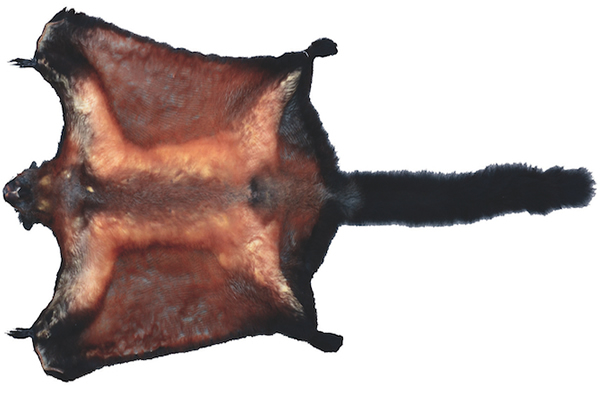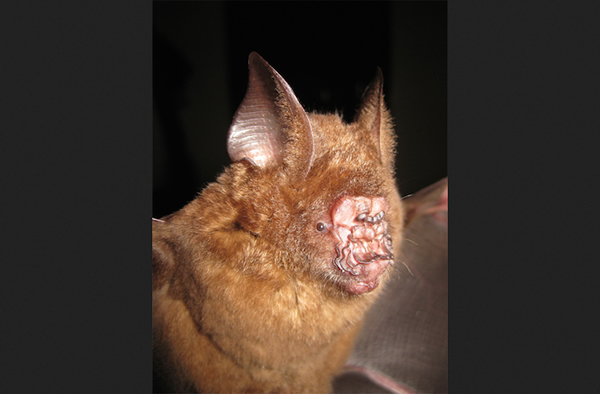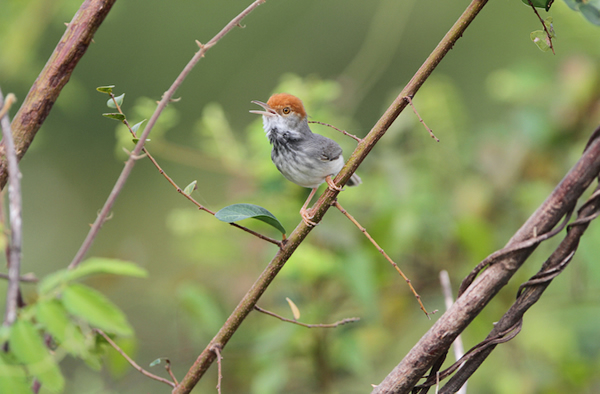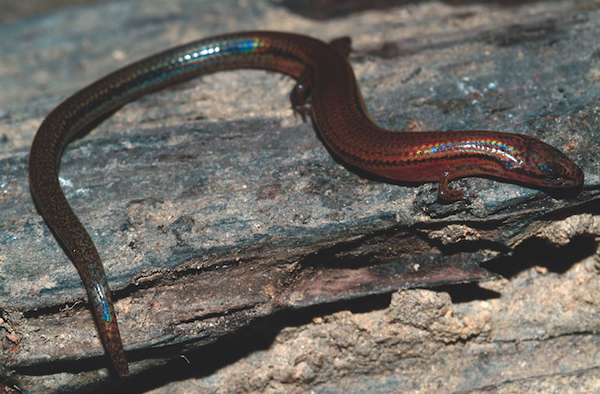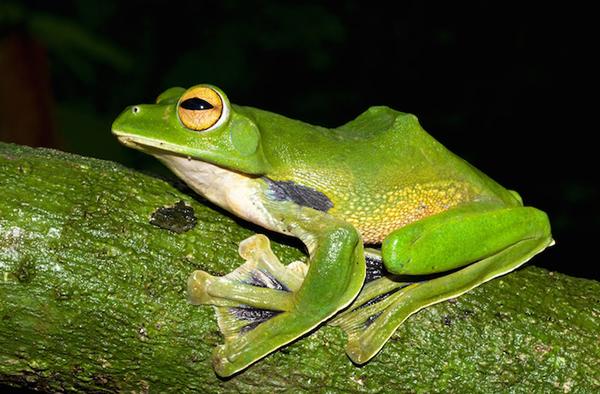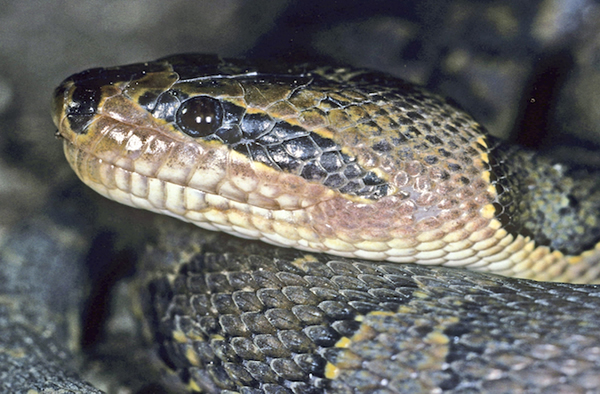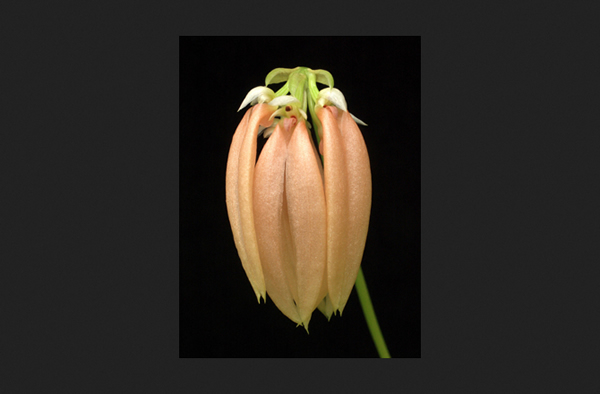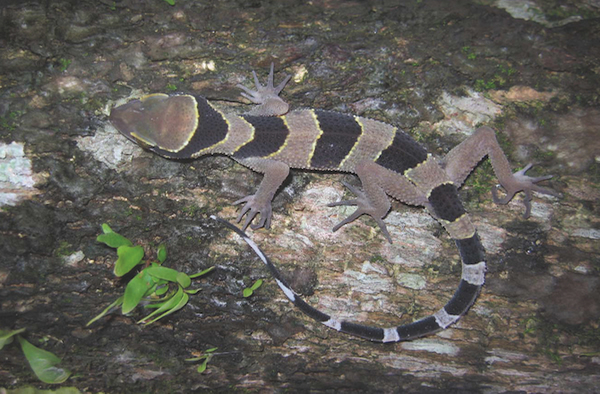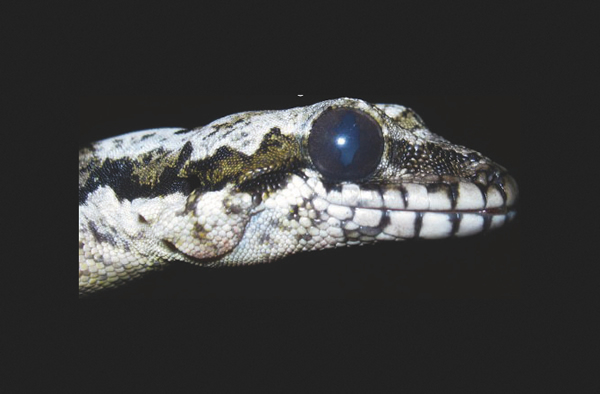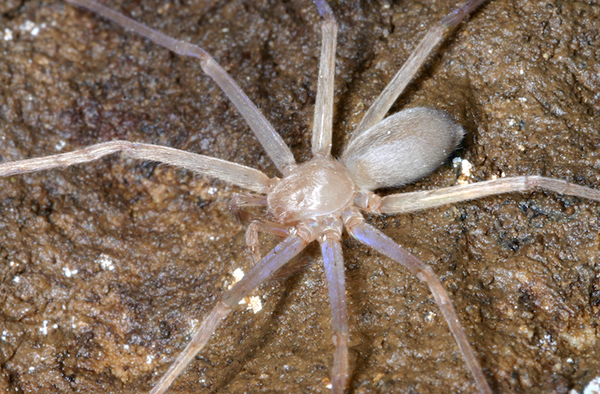Flying Squirrel, Rainbow Lizard Among 367 New Species Found in Mekong
Flying Squirrel
The Laotian giant flying squirrel, Biswamoyopterus laoensis, as seen from the bottom.Daosavanh Sanamxay
The Greater Mekong region of Southeast Asia, through which the Mekong River flows, has yielded an extraordinary 367 new species in 2012 and 2013 alone, according to a new report published by World Wildlife Fund (WWF).
The discoveries in the region, consisting of Cambodia, Laos, Myanmar, Thailand, Vietnam and Yunnan province and Guangxi Zhuang Autonomous Region in southern China, demonstrate that the area "is the front line for scientific exploration" and conservation, the report concludes.
The diverse collection of new species consists, so far, of 290 plants, 24 fish, 21 amphibians, 28 reptiles, one bird and three mammals. In the latter category is the Laotian giant flying squirrel, seen from the bottom in this photo.
Thomas Gray, manager of WWF-Greater Mekong's Species Program, told Discovery News, "Described from a specimen collected from a local wild meat market, this species likely occurs in an area of central Laos characterized by extensive limestone karst formations and which is a center of mammalian endemism (i.e., the animals found here are likely unique to this location and are not found elsewhere).
He continued, "The demand for wild meat from the rapidly growing middle classes in south-east Asia is one of the biggest threats to the region's unique mammals."
Bat With Leafy Nose
Griffin's leaf-nosed bat, Hipposideros griffin.Vu Dinh Thong / Institute of Ecology and Biological Resources, Hanoi
The Griffin's leaf-nosed bat, also one of the three new recent mammal discoveries, has a peculiar nose that may assist in echolocation, the sonar-like ability used by bats to help them navigate.
Gray said, "Despite their critical ecosystem servicing role, as predators of insects, bats remain extremely poorly known in Southeast Asia, and many more discoveries are likely in the coming years."
Red-Headed Bird
The Cambodian tailorbird,Orthotomus chaktomuk.James Eaton/Birdtour Asia
The Cambodian tailorbird is small, light and dark grey, sporting an orange-red tuft on its head. Gray said, "Unlike many newly described species, which are discovered in the Mekong's remote mountains and forests, this Passerine bird was found on the outskirts of Cambodia's capital Phnom Penh.
"It is restricted to flooded scrub along the banks of the Mekong, and is threatened due to rapid urbanization and habitat loss as Phnom Penh expands."
Rainbow Lizard
The rainbow lizard,Lygosoma veunsaiensis.Gabor Csorba/Hungarian Natural History Museum
The scientific name of this iridescent lizard commemorates Veun Sai district in northeast Cambodia, according to Gray. He continued, "This area of mixed dry and evergreen forest is important for a range of threatened birds and mammals including giant ibis, the national bird of Cambodia, and the beautiful douc, a primate species endemic to Indochina."
He added, "The Royal Government of Cambodia recently declared a new protected forest in the area, which will hopefully help secure the future of these species from habitat loss."
Flying Frog
Helen's flying frog,Rhacophorus helenae.Jodi J L Rowley/Australian Museum
Helen's flying frog is a large amphibian that, as its name suggests, can take to the skies. It may glide at least 50 feet. Usually the air travel happens as the bright green frog moves gracefully down from trees to breed in forest pools, or as the frog travels from tree to tree.
The frog lives close to Ho Chi Minh City, an urban center with over 9 million people, so its home really needs protecting if the frog is to continue to survive.
A Masked Snake
The Zorro-masked water snake,Homalopsis mereljcoxi.John C. Murphy
Looking as if it has a Zorro mask across its wide head, this snake features a pattern of alternating brown and cream bands along the length of its body. The eye-catching reptile was discovered in Ban Badan Reservoir, Nakhon Ratchasima Province, Thailand.
The snakes are nocturnal ambush predators whose diet consists mostly of small fish. Members of the Homalopsis genus are viviparous, meaning that females give birth to live young that are relatively large when they enter the world.
Lovely Orchid
A salmon orchid,Bulbophyllum salmoneum.Orchids Online
"This beautiful flower, one of a staggering 290 new plant species described from the region in the past two years, occurs in the Annamite mountains -- the isolated mountain range that links Laos and Vietnam," Gray said.
He continued, "The Annamites, which maintained forest even at the height of the last ice age, are an evolutionary laboratory and support some of the world's most threatened and distinctive species, including the enigmatic saola: an antelope-like ancestral wild cow."
Striped Gecko
A zebra-striped gecko,Cyrtodactylus phuketensis.Montri Sumontha
"This striking gecko was described from Phuket Island, southern Thailand," Gray said. "The forests of southern Thailand, and adjacent areas of Myanmar, support a number of threatened endemic species plus mainland Southeast Asia's largest tiger population. However, rapid habitat loss, often for commodities such as rubber and palm oil, is threatening many forested areas."
Gliding Gecko
Kaeng Krachan parachute gecko,Ptychozoon kaengkrachanense.Montri Sumontha
This new species of parachute gecko, Ptychozoon kaengkrachanense, was discovered in a mountainous evergreen forest in Kaeng Krachan National Park, Phetchaburi Province, western Thailand.
By extending flaps of skin on its flanks and between its toes, the Kaeng Krachan parachute gecko is able to glide between the trees in its rainforest habitat. Three dark markings in the shape of chevrons on its back, as well as other features, such as its unique tail, distinguish this gecko from all other known Ptychozoon species.
Spider With No Eyes
A blind huntsman spider,Sinopoda scurion.Peter Jäger/Senckenberg Research Institute, Frankfurt
The blind huntsman spider is the world's first known eyeless spider.
Gray explained, "The limestone caves of Vietnam, Laos and southern China are a unique ecosystem in which many species have evolved to live completely in the dark. Exploring these hidden worlds, which are threatened through exploitation of limestone rocks to make cement, has revealed a number of new species, each restricted to individual cave formations."
